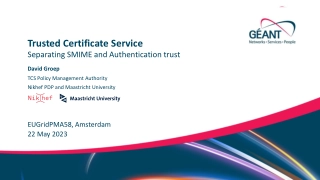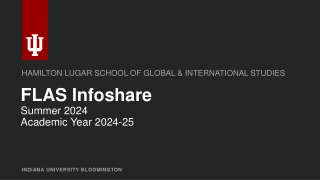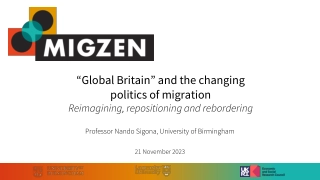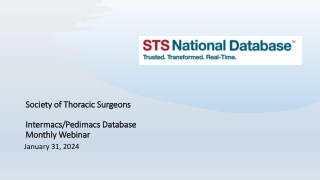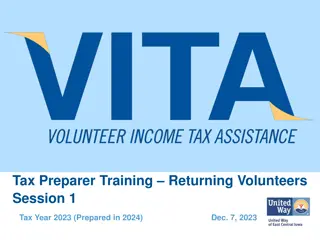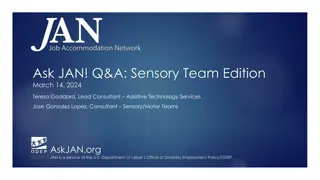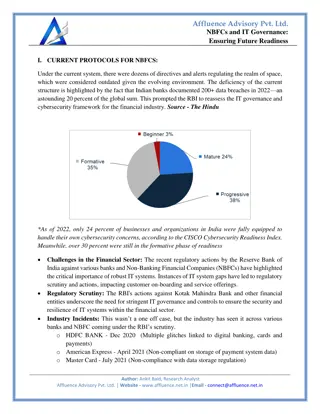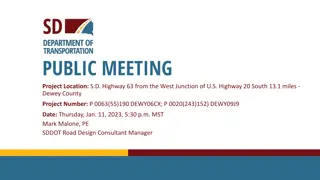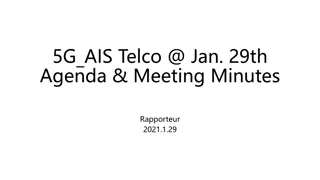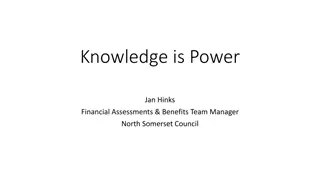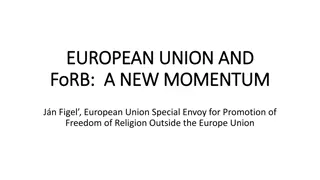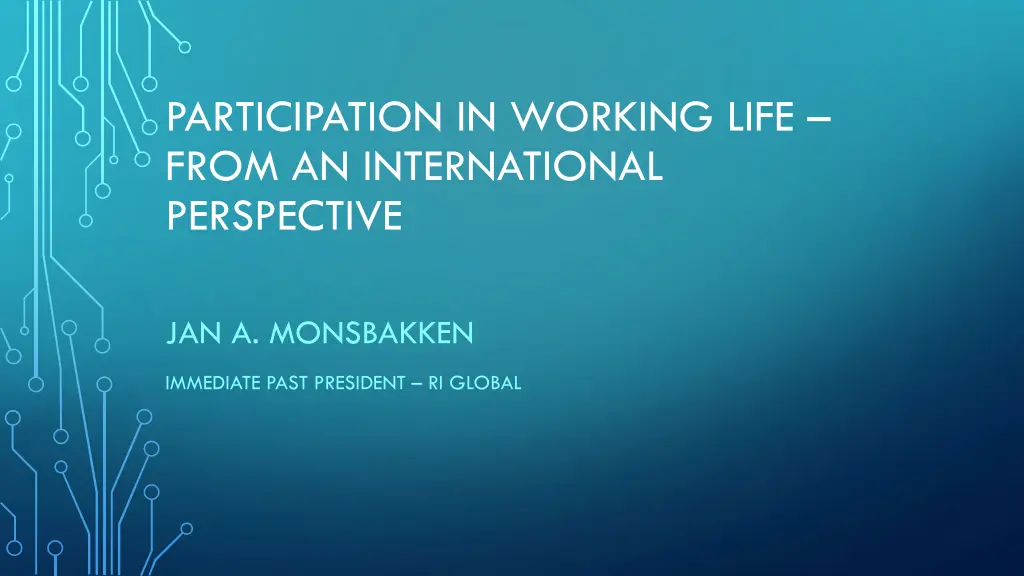
International Perspectives on Working Life and Participation
Explore insights on participation in working life from an international perspective, focusing on employment, self-employment, challenges like unemployment, ways to enter the workforce, and the status of persons with disabilities in the workforce. Learn about initiatives, barriers, and opportunities for inclusive work environments.
Download Presentation

Please find below an Image/Link to download the presentation.
The content on the website is provided AS IS for your information and personal use only. It may not be sold, licensed, or shared on other websites without obtaining consent from the author. If you encounter any issues during the download, it is possible that the publisher has removed the file from their server.
You are allowed to download the files provided on this website for personal or commercial use, subject to the condition that they are used lawfully. All files are the property of their respective owners.
The content on the website is provided AS IS for your information and personal use only. It may not be sold, licensed, or shared on other websites without obtaining consent from the author.
E N D
Presentation Transcript
PARTICIPATION IN WORKING LIFE FROM AN INTERNATIONAL PERSPECTIVE JAN A. MONSBAKKEN IMMEDIATE PAST PRESIDENT RI GLOBAL
Oslo, Norway HTTP://WWW.RIGLOBAL.ORG/ 31/05/2025 2
REHABILITATION INTERNATIONAL Advancing the Rights and Inclusion of Persons with Disabilities World Wide HTTP://WWW.RIGLOBAL.ORG/ 31/05/2025 3
WORLD CONGRESS IN EDINBURGH -2016 HTTP://WWW.RIGLOBAL.ORG/ 31/05/2025 4
DEFINITION OF WORKING LIFE , EMPLOYMENT AND SELF EMPLOYMENT The part of a person s life when they do a job or are at work. Employment . The fact of someone being paid to work for a company or organization Self employment is a situation in which an individual works for himself insted of working for an employer that pays a salary
UNEMPLOYMENT A GLOBAL CHALLENGE Difficult to find good statistics since differnt countries use different criterias when they make statistic s on this issue. But marginalized groups have greater difficulties to enter into the workforce Among these marginalized groups we find PwDs, indigenous peoples, refugees, imigrants and others
HOW TO ENTER THE WORKING LIFE Employment in the normal workforce Self employment Supported employment ( Individual Placement and Support ( IPS))- US and Canada in the 80th s Sheltered workshops
WORK AND EMPLOYMENT ( PWDS ) In Scandinavia about 45-50 % of PwD are in the workforce In Asia about 10- 20% of PwD are working Lack of inclusive education Lack of Universal Design lack of accessible transport- and workplaces To much focus on Disability instead of Ability Quotas in some countries
QUOTAS PROS AND CONTRAS Research from several European countries carried out by dr. Birgitte von Lierop from Holland shows that quotas can be effective: But it is on the condition that the working agencies respect the employers need to get support in adaption of the working place and follow ups additional to financial compensation for indivdual lack of productivity by the employee. The example from Netherlands ( set a political goal for the employers within a time limit if not reached the result is a quota system ( in place in public sector ) 84 countries world wide has a quota system in their national legislation
THE LINK BETWEEN EMPLOYMENT AND HEALTH Work and employment is the single most important factor to secure good health WHY? Gives income to the person and to the society Gives the person a feeling of being a part of the society Gives the person a feeling of contributing and strenghtens selfesteem Gives the person the chance to use his/her potential/ abilities Gives the person a chance to grow and develop.
THE GLOBAL SITUATION IN WORK AND EMPLOYMENT PWDS In developing countries 80-90% are unemployed In the most developed countries the unempolyment rate is 50-70 % In EU PwDs are two to three times more likely to be unemployed than others Latin America and the Caribbians - 80-90% are outisde the work force Australia about 2/3 were unemployed Asia/Pasific 80% or more are unemployed
WHY DO WE HAVE THIS SITUATION A need for better data to describe the actual situation Attitudes in the societies at large Lack of political will to make a change Lack of Awareness The charity model is still in place in most societies
WHO CAN MAKE THE CHANGE? Civil Society must play a leading role ! Both on a national regional and a global level. RI -GRA and other CS organizations has to continue it`s work. ISSA and ILO can play an important role in the future on the global level within this field.
WHO CAN CHANGE THIS SITUATION? - CONT Professional organizations Media Global entities like UN ILO - WHO Unesco Unicef Regional entities like UNESCAP EU and others HTTP://WWW.RIGLOBAL.ORG/ 31/05/2025 14
WHAT ARE THE GLOBAL INSTRUMENTS ? The UN declaration on Human Rights- 1948 The UN CRPD 2006 The World Report on Disability - 2011 HTTP://WWW.RIGLOBAL.ORG/ 31/05/2025 15
ARTICLE 22 - HRC Everyone, as a member of society, has the right to social security and is entitled to realization, through national effort and international co-operation and in accordance with the organization and resources of each State, of the economic, social and cultural rights indispensable for his dignity and the free development of his personality. HTTP://WWW.RIGLOBAL.ORG/ 31/05/2025 16
ARTICLE 25 - HRC (1) Everyone has the right to a standard of living adequate for the health and well-being of himself and of his family, including food, clothing, housing and medical care and necessary social services, and the right to security in the event of unemployment, sickness, disability, widowhood, old age or other lack of livelihood in circumstances beyond his control. HTTP://WWW.RIGLOBAL.ORG/ 31/05/2025 17
OTHER RELEVANT UN CONVENTIONS Convention on the Elimination of All Forms of Discrimination Against Women (CEDAW) Established in 1979 Ratified by 189 states CSW in New York - March HTTP://WWW.RIGLOBAL.ORG/ 31/05/2025 18
Adoption of the UN CRPD ON DEC. 13, 2006 AT THE UNITED NATIONS IN NEW YORK. HTTP://WWW.RIGLOBAL.ORG/ 31/05/2025 19
Convention of the Rights of Persons with Disability (CRPD), Art. 27 Work and Employment (1) States parties shall safeguard and promote the realization of the right to work, including for those who acquire a disability during the course of employment, by taking appropriate steps, including through legislation, to, inter alia: (2) Promote vocational and professional rehabilitation, job retention and return to work programmes for persons with disabilities.
ARTICEL 26 HABILITATION AND REHABILITATION States Parties shall take effective and appropriate measures, including through peer support, to enable persons with disabilities to attain and maintain maximum independence, full physical, mental, social and vocational ability, and full inclusion and participation in all aspects of life. HTTP://WWW.RIGLOBAL.ORG/ 31/05/2025 21
CONTINUE ARTICEL 26 CRPD 2006 To that end, States Parties shall organize, strengthen and extend comprehensive habilitation and rehabilitation services and programms, particularly in the areas of health, employment, education and social services. HTTP://WWW.RIGLOBAL.ORG/ 31/05/2025 22
WORLD REPORT ON DISABILITY 2011 A cooperation between WHO and the World Bank Published in 2011 RI Global was very active in the development of the report. HTTP://WWW.RIGLOBAL.ORG/ 31/05/2025 23
WHO RESOLUTION ON DISABILITY RI together with Equador promoted a new resolution in 2012. Adopted by the WHA in May 2013. The main focus of the resolution was to produce and adopt a Disability Action plan in WHA in 2014. HTTP://WWW.RIGLOBAL.ORG/ 31/05/2025 24
DISABLING BARRIERS BREAK TO INCLUDE WHO global disability action plan 2014-2021: Better health for all people with disability
OBJECTIVES 1. To remove barriers and improve access to health services and programmes. 2. To strengthen and extend rehabilitation, habilitation, assistive technology, assistance and support services, and community-based rehabilitation. 3. To strengthen collection of relevant and internationally comparable data on disability, and support research on disability and related services.
WHO - REHABILITATION 2030 : A CALL FOR ACTION HTTP://WWW.RIGLOBAL.ORG/ 31/05/2025 27
SDGs HTTP://WWW.RIGLOBAL.ORG/ 31/05/2025 28
GOAL 3 - HEALTH Ensure healthy lives and promote well- being for all at all ages HTTP://WWW.RIGLOBAL.ORG/ 31/05/2025 30
GOAL 8 By 2030, achieve full and productive employment and decent work for all men and women, including for young people and persons with disabilities, and equal pay for work of equal value
GOAL 10 10.2. By 2030 empower and and promote social,economic and political inclusion of all, irrespective of age, sex, disability, race,origin,religion oreconomic or other status
HOW TO MAKE A CHANGE ? Awareness raising Better data collection Change from charity to a rights based approach on Disability Change politics and policies Change attitudes in the society and among employers
CONCLUSIONS A need for better data to describe the actual situation Attitudes in the societies at large must be changed from disability to ability Create a political will to make a change Inclusion is an investment for the society and the individual Increase Awareness Use traditional media and social media Change from a charity model to a rights based model
CONCLUSIONS - CONT Use the global instruments on national level If all national governments are able to implement the global instruments on the gras rout level PwDs will particiapte in the workforce in line with all others by 2030. Tis is a commen responsibility for Governments Civil Society organizations DPOs and other stakeholders.
Relatert bilde INCLUSIVE WORKING LIFE HTTP://WWW.RIGLOBAL.ORG/ 31/05/2025 36

